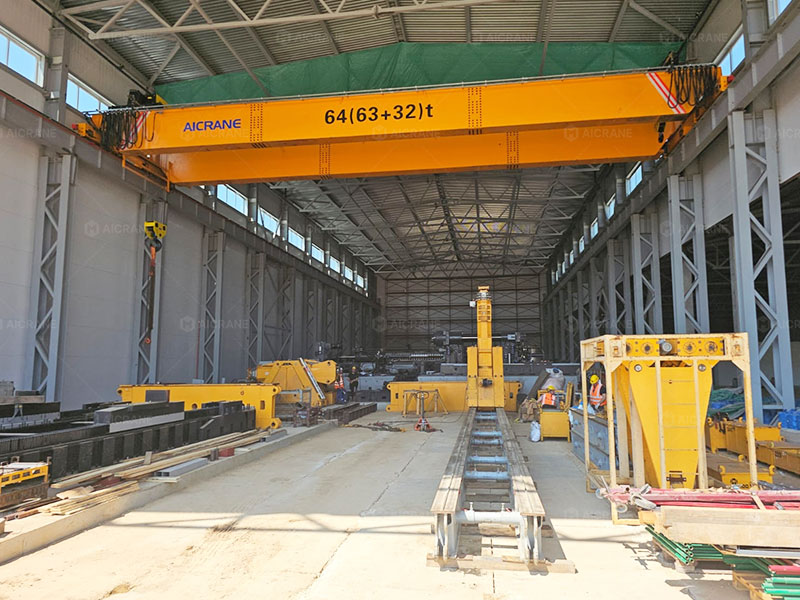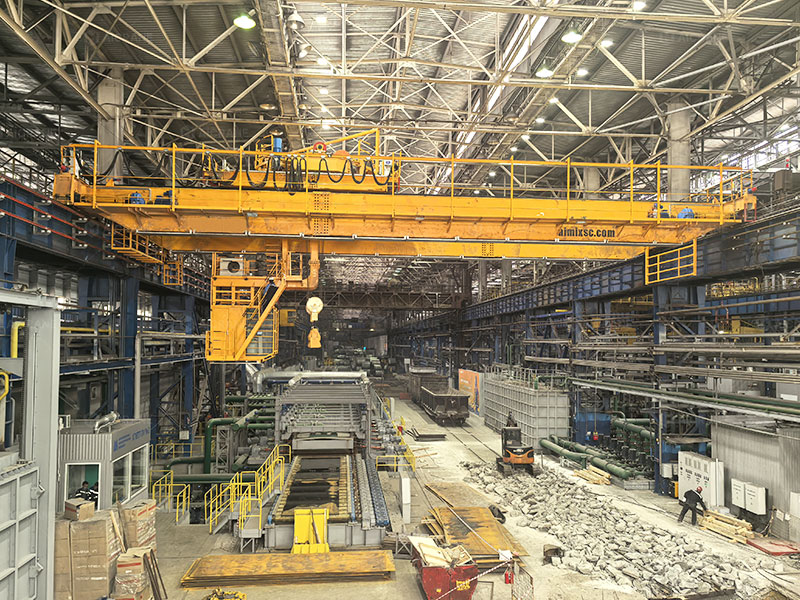When businesses invest in heavy lifting equipment such as a double girder bridge crane, the decision is rarely just about the purchase price. A crane of this scale represents a long-term asset that is expected to deliver safe, efficient, and reliable service for decades. While technical specifications, load capacity, and structural design are key factors in the buying process, one critical yet often underestimated factor is after-sales service.
After-sales service can make the difference between a crane that consistently supports operations and one that causes frequent downtime, unexpected costs, and operational delays. In this article, we will explore why after-sales service is so vital when purchasing a double girder bridge crane, what it typically includes, and how it adds measurable value to businesses.

Understanding the Role of a Double Girder Bridge Crane
Before discussing after-sales service, it’s important to understand why double girder bridge cranes are such significant investments. Unlike single girder cranes, which are designed for moderate lifting, double girder cranes are built to handle heavy loads, longer spans, and higher duty cycles.
Common applications include:
-
Power plants for handling turbines, generators, and transformers
-
Steel and metal industries for loading large coils, plates, and structural components
-
Heavy manufacturing plants for assembling machinery
-
Ports and logistics hubs for bulk material handling
Because of their complexity, double girder bridge cranes require precise installation, periodic maintenance, and proper operator training to perform at their best. This is where after-sales service becomes indispensable.
The Core Elements of After-Sales Service
A reliable after-sales service program typically covers:
-
Installation and Commissioning
-
Professional guidance during assembly and installation ensures the crane meets both safety and performance standards.
-
Commissioning services verify that all electrical, mechanical, and structural systems are functioning correctly before use.
-
-
Training and Operation Support
-
Operators and maintenance staff need training to handle the double girder eot crane safely and efficiently.
-
Proper training minimizes accidents and extends the life of the equipment.
-
-
Regular Maintenance and Inspections
-
Scheduled inspections prevent unexpected breakdowns by detecting wear, fatigue, or misalignments early.
-
Lubrication, tightening, and component checks improve the crane’s lifespan.
-
-
Spare Parts Availability
-
Readily available genuine spare parts ensure fast replacement and reduce downtime.
-
Without this support, sourcing parts independently can be costly and time-consuming.
-
-
Technical Support and Troubleshooting
-
Remote or on-site troubleshooting can quickly resolve issues that interrupt operations.
-
Access to expert engineers and technicians ensures the right solutions are applied.
-
-
Upgrades and Modernization
-
As technology advances, cranes may require electrical system upgrades, control improvements, or safety enhancements.
-
A good after-sales partner supports modernization to keep the equipment competitive.
-

Why After-Sales Service Is Crucial for Double Girder Bridge Cranes
1. Protecting Your Investment
Double girder bridge cranes represent a significant financial investment, often costing hundreds of thousands of dollars depending on capacity and customization. After-sales service safeguards that investment by ensuring the crane continues to operate efficiently and with minimal downtime.
2. Ensuring Safety Compliance
Industrial cranes operate under strict safety standards and regulations. A well-maintained after-sales service plan helps ensure that your crane complies with local and international safety codes. This not only protects workers but also reduces legal and insurance risks.
3. Reducing Downtime and Operational Losses
Unexpected breakdowns can bring entire operations to a halt. In industries like steel production or power generation, downtime can result in losses of thousands of dollars per hour. After-sales service provides preventive maintenance and rapid response to minimize disruptions.
4. Extending Equipment Lifespan
With proper care and periodic upgrades, a double girder bridge crane can serve for 20 to 30 years. Neglecting after-sales service leads to accelerated wear and early replacement, which can be financially draining.
5. Adapting to Changing Business Needs
As your production or logistics requirements grow, you may need higher lifting speeds, improved control systems, or automation features. A supplier with strong after-sales service can help you upgrade the crane rather than replace it, saving substantial costs.
The Risks of Ignoring After-Sales Service
Choosing an overhead crane supplier based solely on price, without considering their service capabilities, often leads to hidden costs later. Common risks include:
-
Poor installation leading to structural misalignment or electrical faults
-
Frequent breakdowns due to lack of regular maintenance
-
Difficulty sourcing spare parts, causing prolonged downtime
-
Lack of technical support, leaving your team to troubleshoot complex issues alone
-
Shortened lifespan of the crane due to inadequate care
In the long run, these issues often make a “cheaper” crane far more expensive than one backed by comprehensive service.
How to Evaluate a Supplier’s After-Sales Service
When comparing double girder bridge crane suppliers, don’t just evaluate the equipment — assess their service package. Here are key questions to ask:
-
Do they provide on-site installation and commissioning?
-
Is operator training included, and can they customize training for your team?
-
What maintenance packages are available, and how often do they recommend inspections?
-
Do they guarantee the availability of spare parts for at least 10–15 years?
-
What is their average response time for emergency service calls?
-
Do they offer modernization and upgrade services for older cranes?
-
Are their technicians certified and experienced with cranes in your industry?
A supplier that confidently answers these questions and provides clear service terms is usually a safer long-term partner.
Case Example: The Value of Strong After-Sales Support
Consider a steel plant that invests in a double girder 100 ton bridge crane for handling heavy coils. Without proper after-sales support, any downtime could disrupt supply chains and customer deliveries. However, with a service contract that includes quarterly inspections, on-site training, and guaranteed spare part delivery within 48 hours, the plant can operate with confidence. Even if a component fails, the crane is quickly restored, minimizing losses.
Conclusion
When purchasing a double girder bridge crane, the true cost is not just in the purchase price but in its long-term operation and reliability. After-sales service ensures that this critical piece of equipment remains safe, efficient, and adaptable to changing needs.
From installation and training to maintenance, spare parts, and modernization, after-sales service provides a foundation for long-term success. Businesses that prioritize after-sales support when choosing a supplier are more likely to protect their investment, maximize uptime, and achieve better returns.
In short, the question is not whether you can afford after-sales service – it’s whether you can afford to go without it.